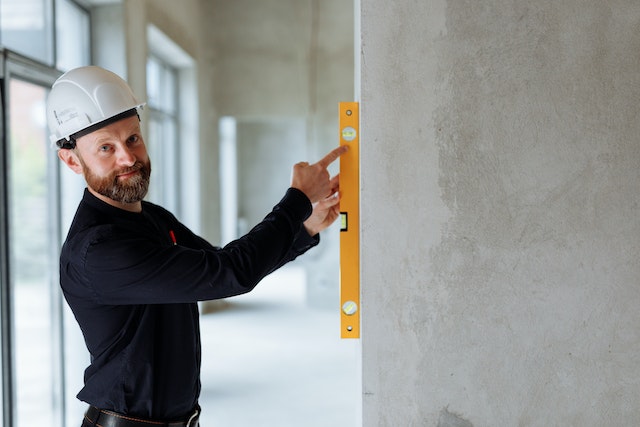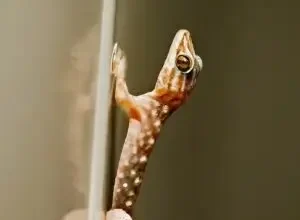How Long Are Hard Hats Good For? – Explained
Explore the longevity & factors affecting it!

If you work in construction, engineering, or any industry where head protection is vital, you probably understand the importance of reliable hard hats. But have you ever wondered how long are hard hats good for saving you?
In this guide, we’ll explore the factors that influence the lifespan of hard hats, how to inspect and maintain them, when to replace them, and other essential tips for ensuring your headgear remains a safeguard on the job site.
Let’s delve into the world of hard hat longevity!
What are Hard Hats?
Hard hats, those iconic pieces of safety gear, are a crucial line of defense for workers in various industries. Designed to shield our heads from potential hazards, these durable helmets come equipped with a suspension system that absorbs impact and distributes force to reduce the risk of head injuries.
Typically made from sturdy materials like polyethylene, they can withstand falling objects, electric shocks, and even protect against minor bumps. Most hard hats also include a brim to shield our faces from the sun or rain.
Their bright colors help improve visibility on busy work sites and make them an indispensable part of workplace safety protocols.
How Long Are Hard Hats Good for?
The durability of hard hats is a vital concern for anyone relying on these protective head gears. While they might appear invincible, hard hats do have a finite lifespan.
Manufacturers typically recommend replacing them after two to five years of use. However, this period can vary based on several factors.
Regular inspection is crucial to ensure they remain in top-notch condition. Exposure to harsh environments, extreme temperatures, and chemicals can accelerate wear and tear.
You may read: Best Carbon Fiber Hard Hats
Frequent impacts, even minor ones, might compromise their effectiveness over time. Moreover, the material quality plays a significant role in determining how long are hard hats good for saving you.
Prioritizing safety means knowing when it’s time to bid farewell to your trusted hard hat and replace it with a newer, more reliable one to ensure unwavering protection on the job.
Factors Affecting Hard Hat Longevity
#1 Material Quality
The material quality of hard hats directly impacts their longevity. High-quality materials, like strong polyethylene, offer better resistance to wear and tear, prolonging their effectiveness.
Cheaper or substandard materials may deteriorate faster, reducing the helmet’s ability to protect over time.
#2 Exposure to External Factors
Exposure to external factors significantly affects hard hat longevity. Harsh weather conditions, UV rays, chemicals, and other environmental elements can degrade the helmet’s integrity.
Regular inspection and proper storage can help mitigate the impact of these factors to make sure that the hard hat remains a reliable safeguard on the job.
#3 Frequency of Use
The frequency of use directly impacts hard hat longevity. Constant wear and tear from regular use can weaken the helmet’s structure over time.
Workers who frequently rely on hard hats may need to replace them more often to maintain optimal protection on the job.
Hard Hat Standards and Certifications
#1 ANSI/ISEA Z89.1-2014
ANSI/ISEA Z89.1-2014 sets the standard for hard hat safety in the United States. This regulation establishes the performance requirements, testing methods, and classifications for protective helmets used in various industries.
You may also read: Best Full Brim Hard Hats
Adhering to this standard ensures that hard hats provide reliable protection against potential hazards, promoting workplace safety.
#2 Other Relevant Standards
In addition to ANSI/ISEA Z89.1-2014, there are other relevant standards worldwide that govern hard hat safety. Various countries and industries may have their own specific regulations and certifications.
This is to make sure that protective helmets meet the necessary safety criteria. Staying informed about these standards can help ensure consistent head protection across different contexts.
When to Replace Your Hard Hat?
#1 Recommended Replacement Period
Knowing when to replace your hard hat is crucial for ensuring ongoing protection. The recommended replacement period for most hard hats is around two to five years from the date of manufacture.
However, factors like material quality, exposure to harsh conditions, and frequency of use can influence their lifespan. Regularly inspect your hard hat for signs of wear and tear.
If you notice any cracks, dents, or other damage, replace it immediately. Prioritizing timely replacement guarantees that your hard hat remains a reliable safety tool on the job site.
#2 Special Circumstances for Replacement
In special circumstances, replacing your hard hat becomes even more critical. If your helmet sustains a significant impact, even if it shows no visible damage, it should be replaced immediately. Hard hats are designed to absorb a single impact, and any subsequent ones might compromise their effectiveness.
Additionally, if your hard hat is exposed to extreme temperatures, chemicals, or other hazardous substances, it may require more frequent replacement.
Prioritize safety by being proactive in replacing your hard hat when faced with these specific situations to ensure continuous protection.
Recycling & Disposing of Old Hard Hats
Recycling and disposing of old hard hats are crucial for both environmental responsibility and workplace safety. If your hard hat is still in usable condition and within its recommended lifespan, consider donating it to organizations or individuals who can make use of it.
However, if it’s no longer fit for protection, recycling is the best option. Some facilities accept hard hats for recycling, where they’re processed into other plastic products.
Avoid tossing them into regular waste bins as they might end up in landfills. Responsible disposal ensures that old hard hats don’t pose any safety risks and contribute to a sustainable future.
Tips for Prolonging Hard Hat Lifespan
Prolonging the lifespan of your hard hat is essential for maximizing its effectiveness and saving on replacement costs.
Firstly, store it properly in a cool, dry place away from direct sunlight and chemicals. Clean your hard hat regularly using mild soap and water, avoiding abrasive cleaners that might damage the material.
Inspect it frequently for signs of wear, cracks, or dents, and promptly replace any damaged parts. Consider using a sweatband to minimize sweat absorption which can degrade the helmet’s integrity over time.
Avoid making modifications or drilling holes into the hard hat as this may compromise its safety certification. By following these simple tips, you can ensure your hard hat remains a reliable safeguard on the job for an extended period.
Final Words on the Longevity of Hard Hats
Overall, understanding how long are hard hats good for is vital for maintaining a safe work environment. Factors like material quality, exposure to external elements, and frequency of use all play a role in determining their lifespan.
Regular inspection and adherence to relevant safety standards are essential for ensuring the hard hat’s integrity. Knowing when to replace your hard hat, especially in special circumstances, is critical to sustaining reliable protection.
Additionally, responsible recycling or proper disposal helps us contribute to a sustainable future. By following the tips to prolong their lifespan, you can make the most of these invaluable safety tools, prioritizing the well-being of workers on the job site.
Remember, a well-maintained hard hat is not just a helmet but a guardian for your head safety!





